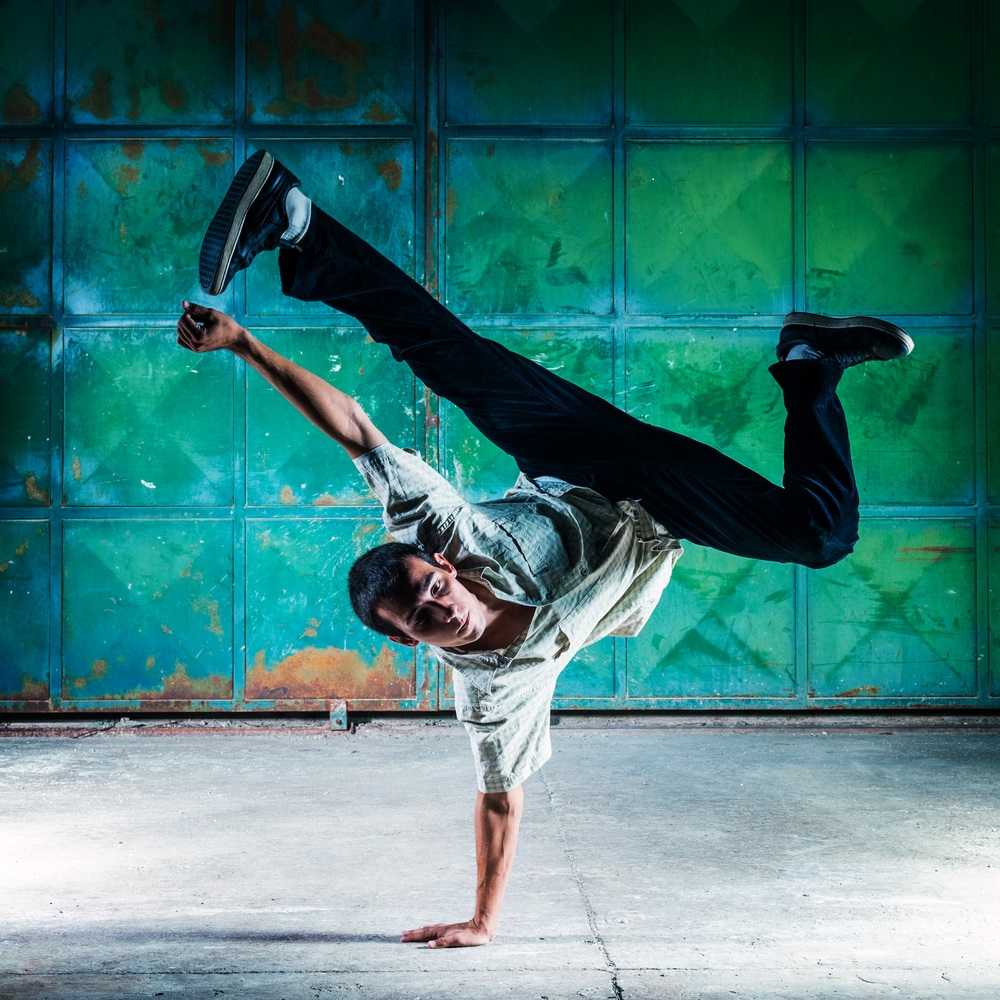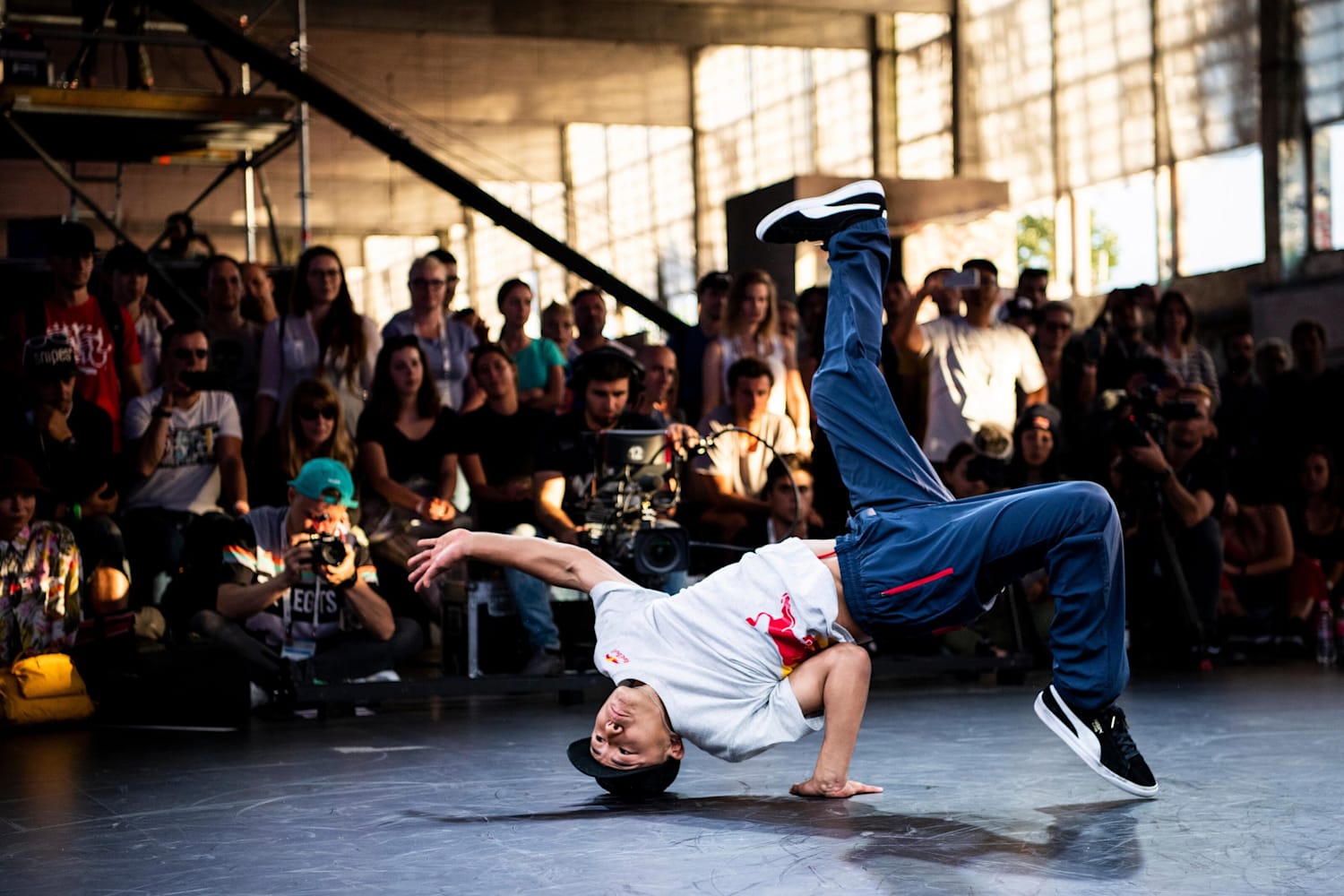History and Evolution of Breakdancing

Breakdancing, a vibrant and dynamic form of street dance, has its roots in the Bronx, New York City, and is deeply intertwined with the birth and evolution of hip-hop culture.
Origins in the Bronx
Breakdancing emerged in the 1970s in the South Bronx, a neighborhood facing economic hardship and social unrest. This period witnessed a cultural renaissance, with young people expressing themselves through music, art, and dance. Breakdancing, as a form of street dance, became an outlet for creativity, self-expression, and social commentary.
Key Figures and Crews
The early development of breakdancing was shaped by influential individuals and crews. The Rock Steady Crew, founded in 1977, is widely regarded as one of the pioneering crews, known for their innovative moves and dynamic performances. Other notable figures include Crazy Legs, the founder of the Rock Steady Crew, and Kool Herc, a DJ credited with popularizing the breakbeat, a musical element that became central to breakdancing. These individuals and crews played a pivotal role in establishing breakdancing as a distinct and recognized dance form.
Evolution of Breakdancing Styles
Breakdancing encompasses a range of styles, each with its unique characteristics and techniques.
Top Rock
Top rock refers to the dance moves performed while standing, often used as a transition between other breakdancing elements. It involves rhythmic footwork, body isolations, and arm movements, creating a dynamic and engaging visual display.
Footwork
Footwork, as the name suggests, focuses on intricate and complex foot movements. Breakdancers use a variety of steps, spins, and slides, creating intricate patterns and rhythms on the dance floor. Footwork requires precision, agility, and a deep understanding of rhythm and timing.
Power Moves
Power moves are the most physically demanding aspect of breakdancing, involving acrobatic maneuvers that require strength, flexibility, and control. These moves often involve rotations, flips, and inversions, showcasing the dancer’s athleticism and technical skill. Examples include the windmill, the headspin, and the flare.
Freezes
Freezes are static poses held at the end of a move, showcasing the dancer’s balance, control, and creativity. They often involve intricate handstands, balances, and other dynamic poses, adding a dramatic element to the dance performance.
Global Evolution
Breakdancing has transcended its New York City origins and spread globally, evolving into a diverse and dynamic dance form with regional styles and influences. In Japan, for example, breakdancing has developed a distinct style characterized by precise footwork and intricate power moves. In France, breakdancing has incorporated elements of traditional French dance, creating a unique blend of styles. The global spread of breakdancing has enriched its artistic vocabulary, creating a vibrant tapestry of styles and influences.
Techniques and Styles of Breakdancing
Breakdancing, a vibrant and dynamic dance form, involves a wide range of techniques and styles that showcase the dancers’ agility, creativity, and athleticism. The fundamental techniques are categorized into footwork, spins, and power moves, while different styles like B-boying, B-girling, and popping have their unique characteristics.
Footwork
Footwork is the foundation of breakdancing, providing the basis for complex movements and transitions. It involves intricate foot patterns, quick steps, and precise body control. Breakdancers use a variety of footwork techniques, including:
- Toprock: This is the basic footwork used to move around the dance floor, usually performed standing up, and is characterized by rhythmic steps, slides, and turns.
- Six-Step: A foundational footwork pattern consisting of six steps that are performed in a circular motion.
- Footwork Combinations: Breakdancers combine different footwork patterns to create intricate and visually appealing sequences.
Spins
Spins are a crucial element of breakdancing, adding a sense of rotation and dynamism to the dance. Breakdancers use various techniques to spin on their head, back, or hands, including:
- Headspin: The most iconic spin, where the dancer spins on their head, using their arms and neck muscles for balance and control.
- Backspin: A spin performed on the back, using the arms and legs for support and momentum.
- Handspin: A spin performed on the hands, using the arms and shoulders for balance and control.
Power Moves
Power moves are the most visually striking techniques in breakdancing, requiring strength, agility, and precision. These moves involve complex acrobatics, flips, and jumps, often performed with a high degree of athleticism.
- Flare: A move where the dancer leaps into the air and flips their legs forward, landing on their hands.
- Windmill: A move where the dancer spins their body around a horizontal axis, using their arms and legs for support and momentum.
- Suicide: A move where the dancer leaps into the air and flips their body backwards, landing on their feet.
Breakdancing Styles
Breakdancing encompasses various styles, each with its unique characteristics, techniques, and iconic moves.
| Style | Characteristics | Techniques | Iconic Moves |
|---|---|---|---|
| B-boying | Energetic, acrobatic, and physically demanding, with a focus on power moves and complex footwork. | Footwork, spins, power moves, freezes, and transitions. | Flare, windmill, suicide, headspin, backspin, and six-step. |
| B-girling | Elegant, fluid, and graceful, with a focus on spins, isolations, and creative interpretations of traditional B-boying moves. | Spins, isolations, floorwork, and transitions. | Headspin, backspin, handspin, wave, and freezes. |
| Popping | A style that involves quick, sharp, and percussive movements, often accompanied by a popping sound. | Popping, locking, hitting, and robotic movements. | Hitting, popping, locking, and robot. |
Breakdancing Culture and Community: Break Dancing

Breakdancing is not just a dance form; it’s a vibrant cultural phenomenon deeply rooted in hip-hop culture. This section delves into the essence of breakdancing culture, exploring its role in hip-hop, the significance of battles and competitions, and the values of respect, collaboration, and creativity that underpin this dynamic community.
Breakdancing’s Influence on Hip-Hop Culture
Breakdancing, alongside rapping, DJing, and graffiti art, forms the four pillars of hip-hop culture. It emerged in the 1970s in the Bronx, New York, as a form of self-expression and a way for marginalized communities to voice their experiences and aspirations. Breakdancing provided a platform for artistic expression, social commentary, and community building. It became a unifying force, bringing together diverse individuals through shared passion and creativity.
The Importance of Battles and Competitions, Break dancing
Breakdancing battles are more than just competitions; they are cultural events that showcase the artistry, skill, and innovation within the breakdancing community. These battles provide a platform for dancers to challenge themselves, push their boundaries, and earn recognition.
- Battles foster a spirit of healthy competition, encouraging dancers to constantly improve their skills and develop new moves.
- They serve as a stage for showcasing the unique styles and innovations of different crews and individual dancers.
- Battles provide a platform for aspiring dancers to gain recognition and build their reputation within the community.
Values of Respect, Collaboration, and Creativity
Breakdancing culture emphasizes respect, collaboration, and creativity.
- Respect: A fundamental principle in breakdancing is respect for one’s fellow dancers, regardless of their skill level or experience. This respect extends to acknowledging the history and traditions of the dance form and recognizing the contributions of pioneers and mentors.
- Collaboration: Breakdancing encourages collaboration, whether it’s sharing knowledge, training together, or creating new routines. This collaborative spirit fosters a sense of community and promotes the growth of the dance form.
- Creativity: Breakdancing is a constantly evolving art form that thrives on creativity. Dancers are encouraged to experiment, innovate, and push the boundaries of what’s possible. This creative spirit is evident in the development of new moves, styles, and techniques.
Breakdancing’s Impact on Youth Culture
Breakdancing has had a profound impact on youth culture, providing a powerful outlet for self-expression, empowerment, and personal growth.
- Breakdancing offers young people a positive alternative to negative influences, providing a constructive channel for their energy and creativity.
- It instills discipline, perseverance, and teamwork, contributing to personal development and self-confidence.
- Breakdancing empowers youth by giving them a voice and a platform to express themselves, regardless of their background or circumstances.
Break dancing – Breakdancing, with its complex footwork and gravity-defying spins, often involves a surprising amount of physical comedy. It’s not uncommon to see a b-boy or b-girl stumble, slip, or even fall, leading to moments of laughter and applause. These unexpected moments remind us that even the most skilled dancers are human, and that sometimes, a good laugh is the best way to break the tension.
Just like a well-timed couch joke , these comedic moments add an element of lightheartedness to the often intense world of breakdancing.
Break dancing, a dynamic and expressive form of dance, demands incredible athleticism and technical prowess. While its roots lie in street culture, break dancing has gained recognition as a legitimate sport, even vying for inclusion in the Olympics. Similarly, sport climbing has also emerged as a competitive discipline, captivating audiences with its thrilling feats of strength and agility.
India, a nation with a rich sporting heritage, has made strides in sport climbing, as evidenced by its medal haul at the Olympics, which can be explored in detail here. Like break dancing, sport climbing showcases the human body’s potential for extraordinary feats, pushing boundaries and inspiring generations to come.
